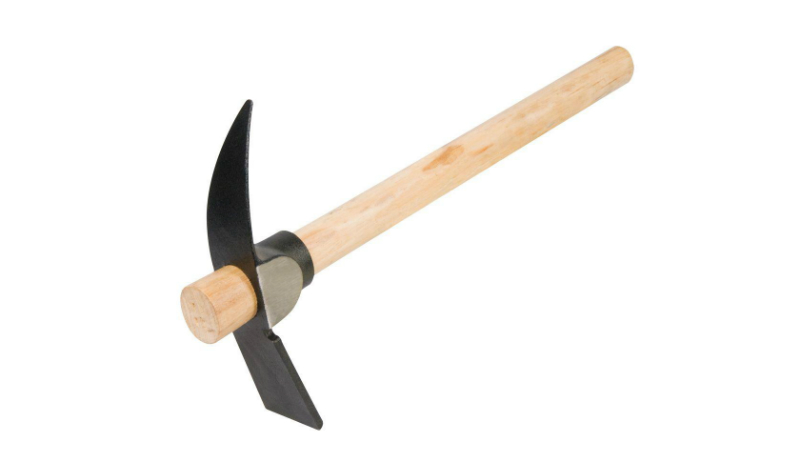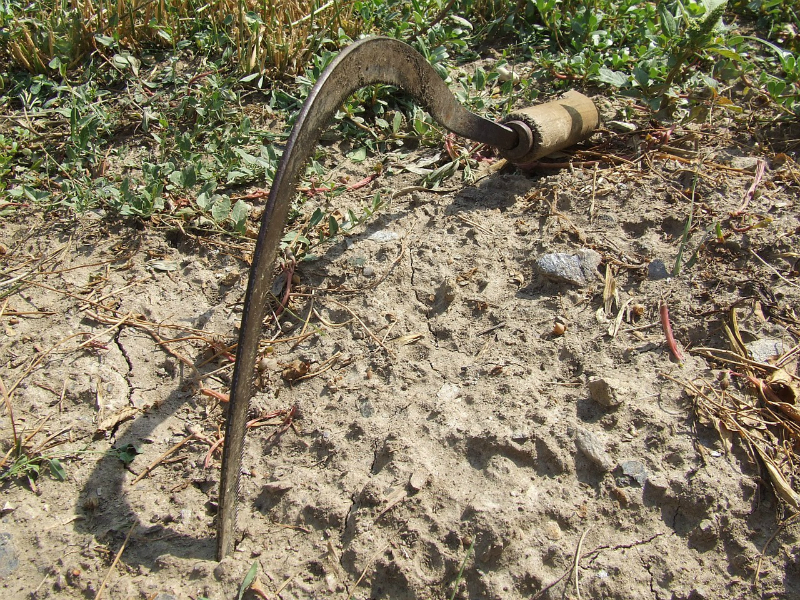
Nothing can be described as a true labor of love quite like the toil of a gardener. Traditional gardening methods incorporate a lot of movements that translate into a whole-body workout—bending, lifting, hauling and pushing—that can be compounded under extreme weather conditions.
Much of the technology in the agricultural world has emerged to lessen the burden on the body. This, however, has perhaps an unintended consequence of taking a heavier toll on the land.
Heavy tractors compact soil. Mowers and weed-whackers tear up delicate habitats. Tillers destroy soil microorganisms. And all these machines run on fossil fuels that put our environment in long-term risk.
Despite some of the advancements in food production these types of equipment have helped humans achieve, some farmers have returned to using human-powered equipment to cultivate the earth in a more ecologically sound way. Here are five human-powered garden tools you might consider adding to your toolshed if you want to start growing more sustainably.
1. Broadfork
The more that research reveals about the farm’s complex soil life, the more farmers have called into question the role tillers play in upsetting soil structure, particularly large, mechanized equipment that plunges deep into the earth to invert the earth’s layers. Yet at the same time, gardening in hard, compact soil yields poor results.
Enter the broadfork (pictured above).
A broadfork consists of metal tines on a horizontal bar (the fork), which is mounted on two handles that extend up from the bar. The farmer places the tines into the soil, steps on the bar, and uses the handles to rock back and forth, gently breaking up compaction along the soil’s strata. While this tool is typically meant to be used on land that has been previously worked, it can help reduce the need for more frequent tilling of the soil. It also helps to aerate the soil while leaving soil layers intact.
2. Mattock

For sod or more heavily compacted soil that needs breaking up prior to cultivation, the human-powered tool you need is a mattock. Similar to a pick-axe, it has a head mounted onto a 3- to 4-foot handle that combines an arched, axe-like blade called an adze with either a pick or an axe. The farmer uses an arched swinging motion to break up soil, as well as roots, clay and even shale.
While this has a heavier impact on soil than the broadfork, it doesn’t compare to the damage to soil structure and microoganisms performed by mechanized equipment. Plus, the mattock can be used as a digging tool for tasks such as planting trees and making trenches, giving it versatility at an affordable price point.
3. Scythe

Think of a scythe as a human-powered weed eater, mower and harvester, all wrapped into one simple tool. It consists of a curved blade attached to a long pole with two short handles. The operator holds onto the handles and uses a twisting motion to cut tall weeds, grass or grain crops.
Scythes come in different sizes for different tasks. While smaller blades are more proficient at cutting grass or wheat, more hefty blades can clear small saplings. This tool is nimble, getting into places that no mower ever could, while also eliminating dependence on fuel and treading lightly on the biodiversity of a given area.
4. Sickle

A sickle is used for tasks similar to ones requiring a scythe—harvesting grain or cutting weeds—but in instances where precision matters, such as when you need to move close to crops. A semi-circle blade atop a short handle, this tool is used one-handed instead of two, and it cuts a smaller area than a scythe. However, it still packs a great environmental punch, eliminating the need for gasoline and helping to preserve delicate ecosystems from unnecessary damage.
5. Raised-Bed Builder
Raised garden rows, even in gardens without a bed structure holding the soil in place, provide the benefits of soil temperature and moisture regulation and can help you focus your fertilization efforts. While implements can be added onto tractors to make these raised rows, a simple, low-cost way to build them up without the need for fossil-fuel power is using a raised-bed builder.
This human-powered tool originated as a horse-stable scraper. It consists of a rectangle blade mounted on a long handle and is used much like a hoe to push or pull materials. After working a garden bed with the broadfork, you can use the raised-bed builder to mound up soil into 12- to 18-inch beds for planting. As a bonus, it’s also a handy tool for light maintenance on a gravel driveway.
Why Choose Human-Powered Tools?
Using human-powered tools in the garden isn’t for the faint of heart. If it sounds like these tools will require some extra energy and time on your part, you’re right. However, when you consider the benefits they offer your health—allowing you to stretch and twist and build up muscle—they offer more than environmental sustainability; they might be your ticket to an overall healthier lifestyle.
After getting your body accustomed to human-powered tools, you can enjoy your time in the garden free of loud noises and nasty fumes, while getting the exercise we all require to live more healthy lives. And when you consider the price-point of most human-powered tools compared with mechanized ones, they are a more economical option, as well.




